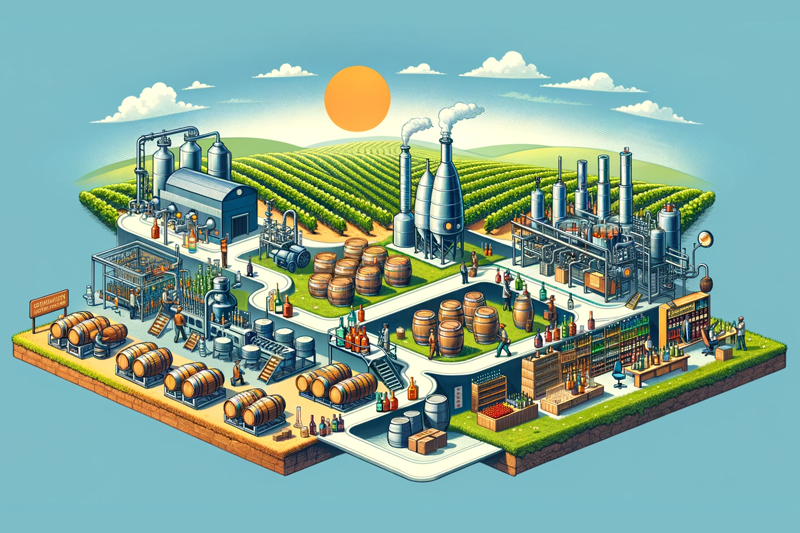There are many aspects to consider when thinking about data analytics in the beverage alcohol industry. An organization can focus solely on sales, whether that is from the product point of view or to check on how its employees are doing. Data can be used to gauge the effectiveness of incentives programs, or to see how products perform in different regions, and whether changes need to be made. The data can be used to provide answers to any number of questions, but in order to track product performance, the product needs to be delivered in the first place.
Beverage alcohol has its own unique challenges within the supply chain industry. From the raw materials to packaging to a sale at your local store, there are many factors to consider when it comes to getting alcohol where it needs to be. Here’s how analytics can help.
Production
Almost all beverage alcohol products start in the ground in some way. From wheat to grapes to hops, farming often provides the first pieces of data in the beverage alcohol supply chain puzzle.
Analytics in production
Farms use countless data points to monitor growing. Technology can determine the ideal conditions for different crops and help maintain those conditions. When the materials move into the manufacturing stage, there is more data to collect and monitor. That can include automating the settings for a desired batch of beer or wine. In addition to making the actual product, analytics can help keep the machines used in a brewery or other facility in working order. Data can help determine optimal timing for machine maintenance, and if there are parts that need replacing, that aspect of the supply chain can be monitored as well.

Packaging
One potentially complex feature of the beverage alcohol supply chain is packaging. There are layers to packaging. Different types of glass are used in bottling depending on the specific shading needed to filter out light. Whether it’s the bottles for the liquids or the labels that go on those bottles, getting the product ready to be moved is another aspect that needs to be considered.
Analytics in packaging
In this sense, beverage alcohol is like many other industries. The materials involved in packaging could come from any number of sources, and analytics can help a company track what it needs to know. This includes potential alternate sources if problems come up, and aspects like sustainability to make sure an organization is making the most ethical choices when it comes to the materials involved in packaging their product.

Shipping
One of the biggest challenges in the beverage alcohol supply chain is getting the finished product from place to place. Strict regulations in the industry set limitations on what can be moved, where, and by whom.
Analytics in shipping
Data can help keep track of those regulations, which can vary from state to state. It can also help an organization operate at optimal efficiency, informing shipping decisions such as how long a shipment might take. The data could also inform financial decisions based on which logistics companies offer temperature-controlled warehouse space or storage space for other packaging materials, which an organization might be paying more (or less) for on its own.

Bringing it all together
Every industry wants visibility into its supply chain. When it comes to all aspects of the beverage alcohol industry, there is a unique importance to knowing where everything is at all times. There are so many different aspects to consider, and often each individual piece works independently of one another.
The right business analytics solution can bring all of that information into one place, producing comprehensive reports that can give an overall picture of elements like warehouse inventory, shipping location data, or brewery conditions. Then, of course, there is that final step on the supply chain, when a beverage reaches the customer. Analytics can also keep track of those sales, and help make sure an organization is thriving.
- Analyzing the Challenges of Pharmaceutical Supply Shortages - April 26, 2024
- Summer is an Opportunity for Digital Transformation in Education - April 17, 2024
- Your Car is Tracking More than Miles per Hour - April 11, 2024



